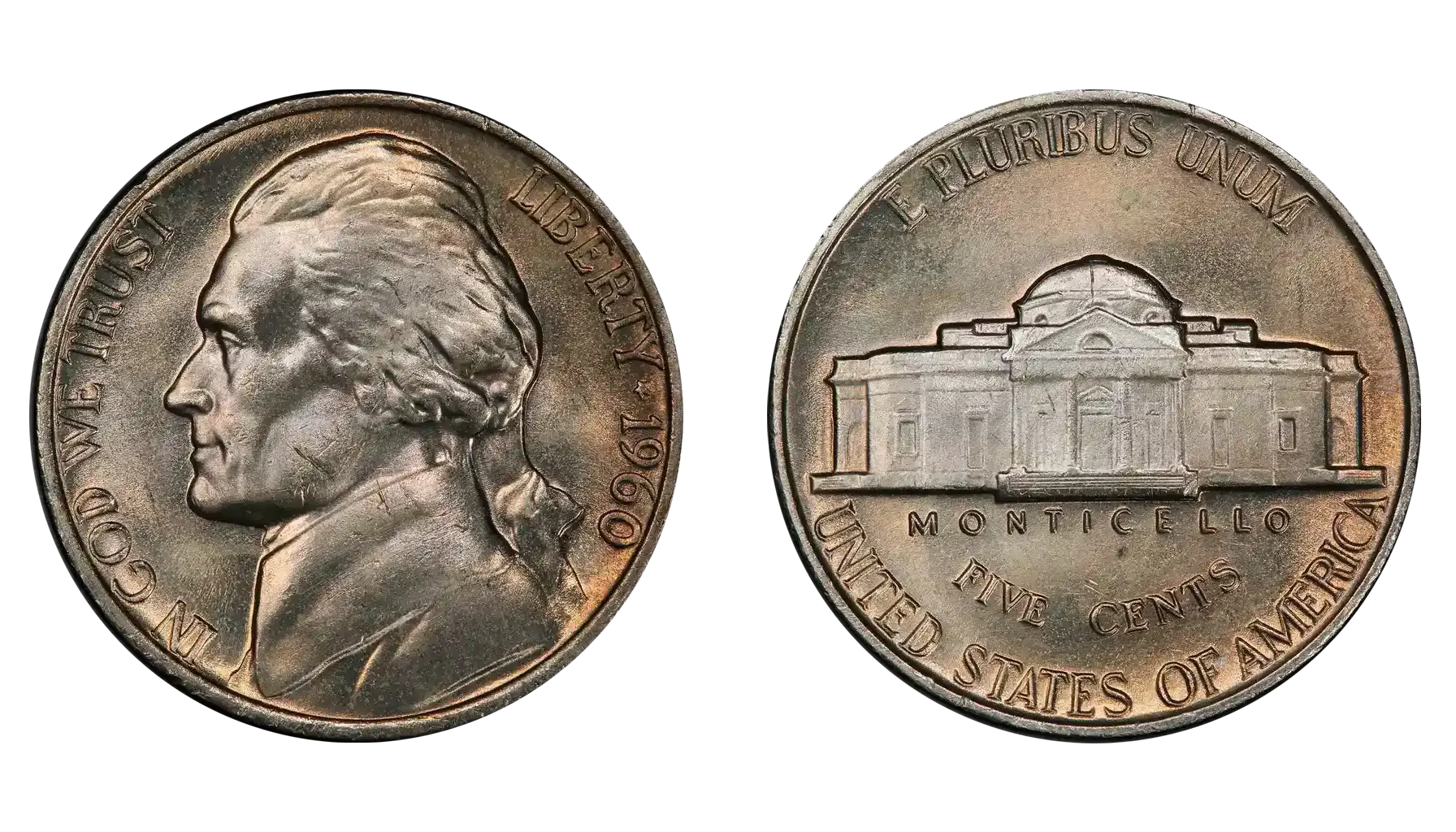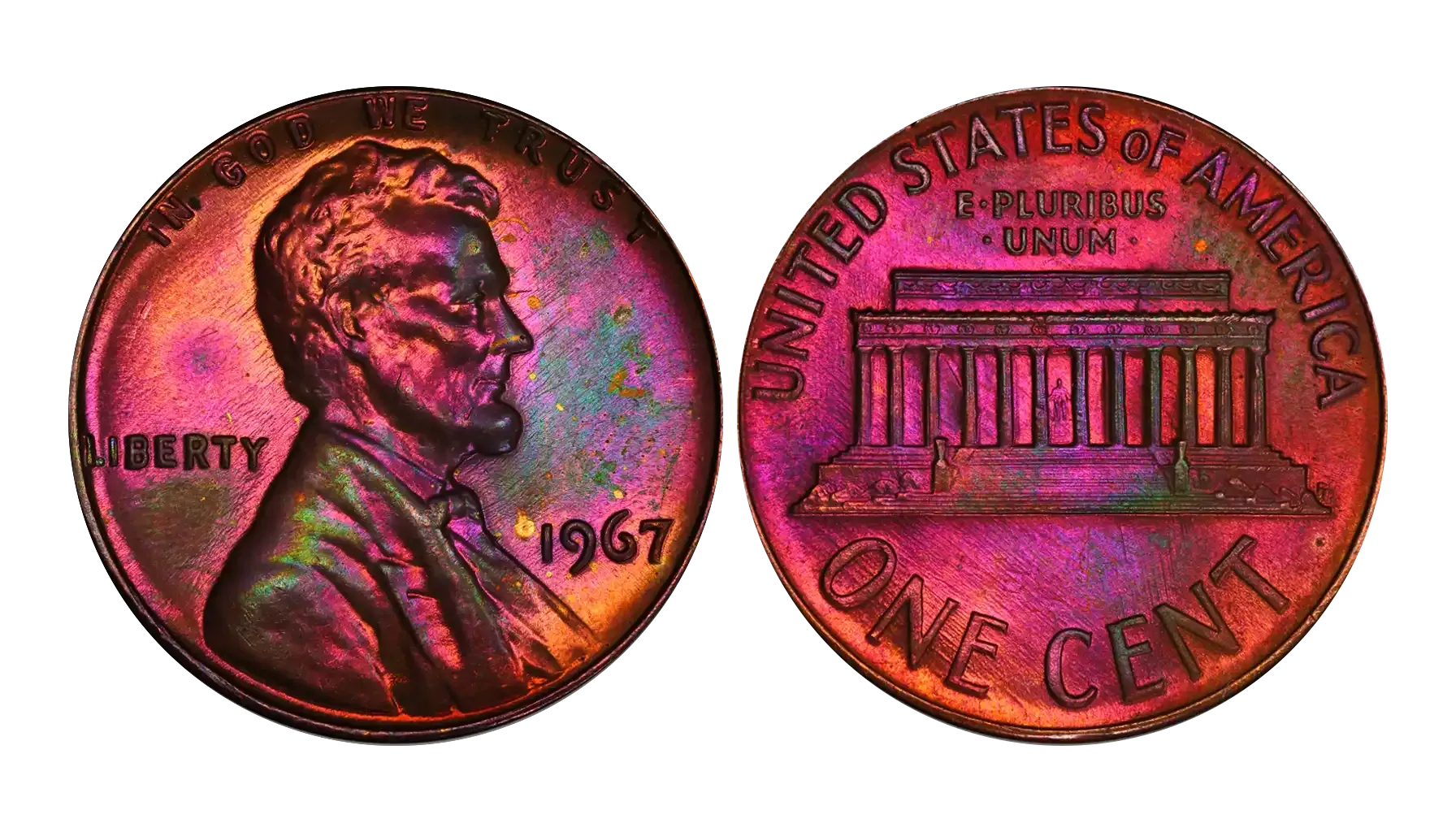Contents:
Though millions were minted, not all 1960 nickels were created equal. Here's why they matter to collectors:
They mark the beginning of a new decade in U.S. coinage.
They include varieties with rare Full Steps details—an elite class among Jeffersons.
Certain minting 1960 nickel errors have skyrocketed in value at auctions.
But how much is a 1960 nickel worth today? And how can identifying coins and their values help in collecting?
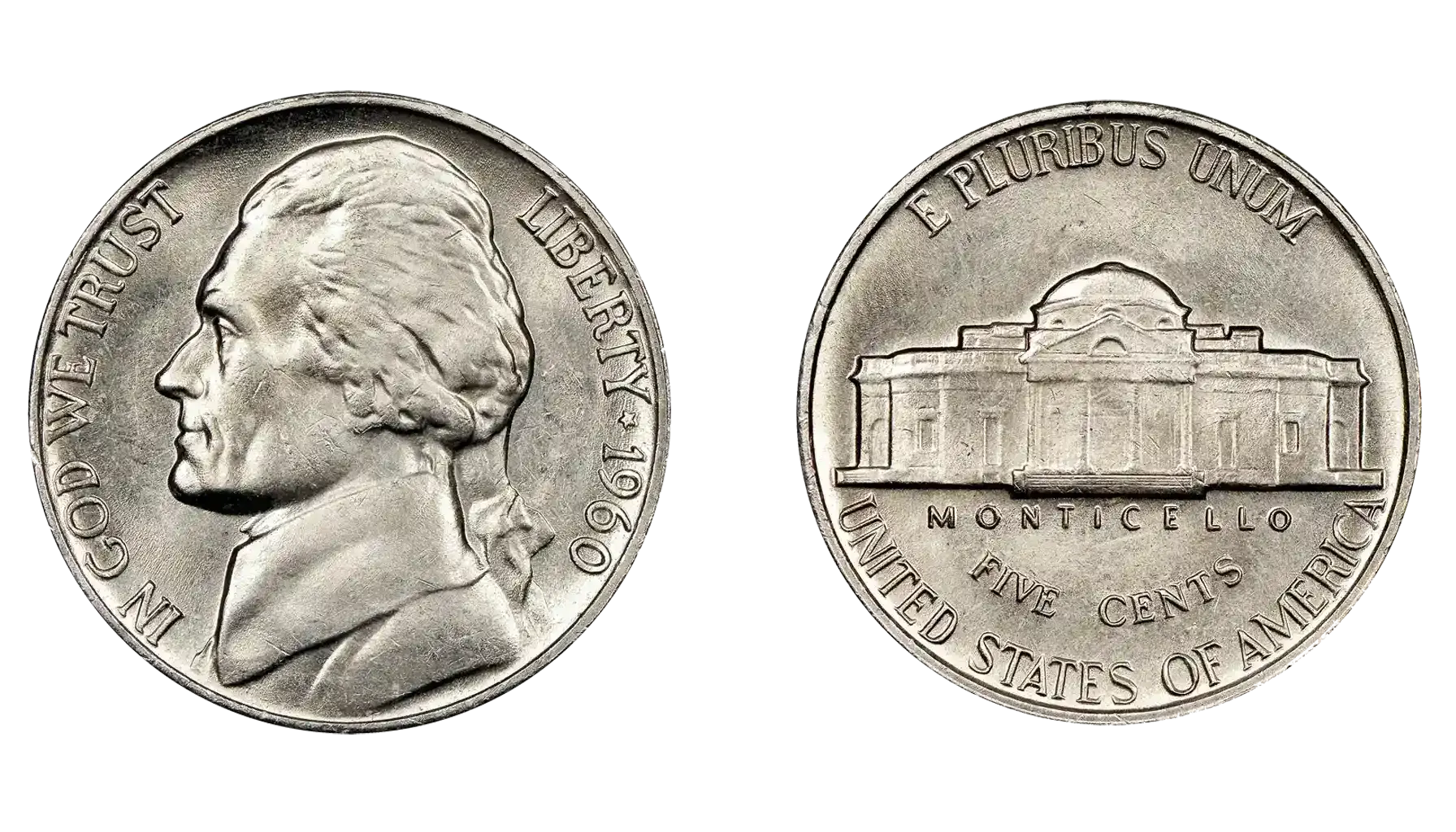
Specifications Table
Feature | Details |
Year | 1960 |
Denomination | 5 Cents |
Designer | Felix Schlag |
Composition | Is a 1960 nickel silver? No: 75% Copper, 25% Nickel |
Weight | 5.00 grams |
Diameter | 21.2 mm |
Edge | Plain |
Mint Marks | 1960 No Mint Mark Nickel (Philadelphia), D (Denver) |
Mintage (Philadelphia) | 55,473,000 |
Mintage (Denver) | 192,582,180 |
Proof Coins | Yes (Philadelphia, no mint mark) |
Obverse Design | Thomas Jefferson portrait (left-facing) |
Reverse Design | Monticello building |
Known Varieties | Doubled Die Obverse (DDO), RPM (D Mint), FS |
1960 Jefferson Nickel Value Range | $0.05 – $300+ depending on grade and variety |
1960 Nickel Silver Content
How much silver is in a 1960 nickel? It contains no silver.
Here are the correct specifications regarding its metal content:
Are 1960 nickels silver? Here’s the composition: 75% copper, 25% nickel (cupronickel)
So, is a 1960 nickel made of silver? 0% (none)
Only U.S. nickels minted from 1942 to 1945 (commonly known as "silver war ones") contain 35% silver. These wartime coins have a large mint mark (P, D, or S) above Monticello on the reverse.
Is 1960 nickel silver? These ones are post-war standard-issue coins and were never struck with silver.
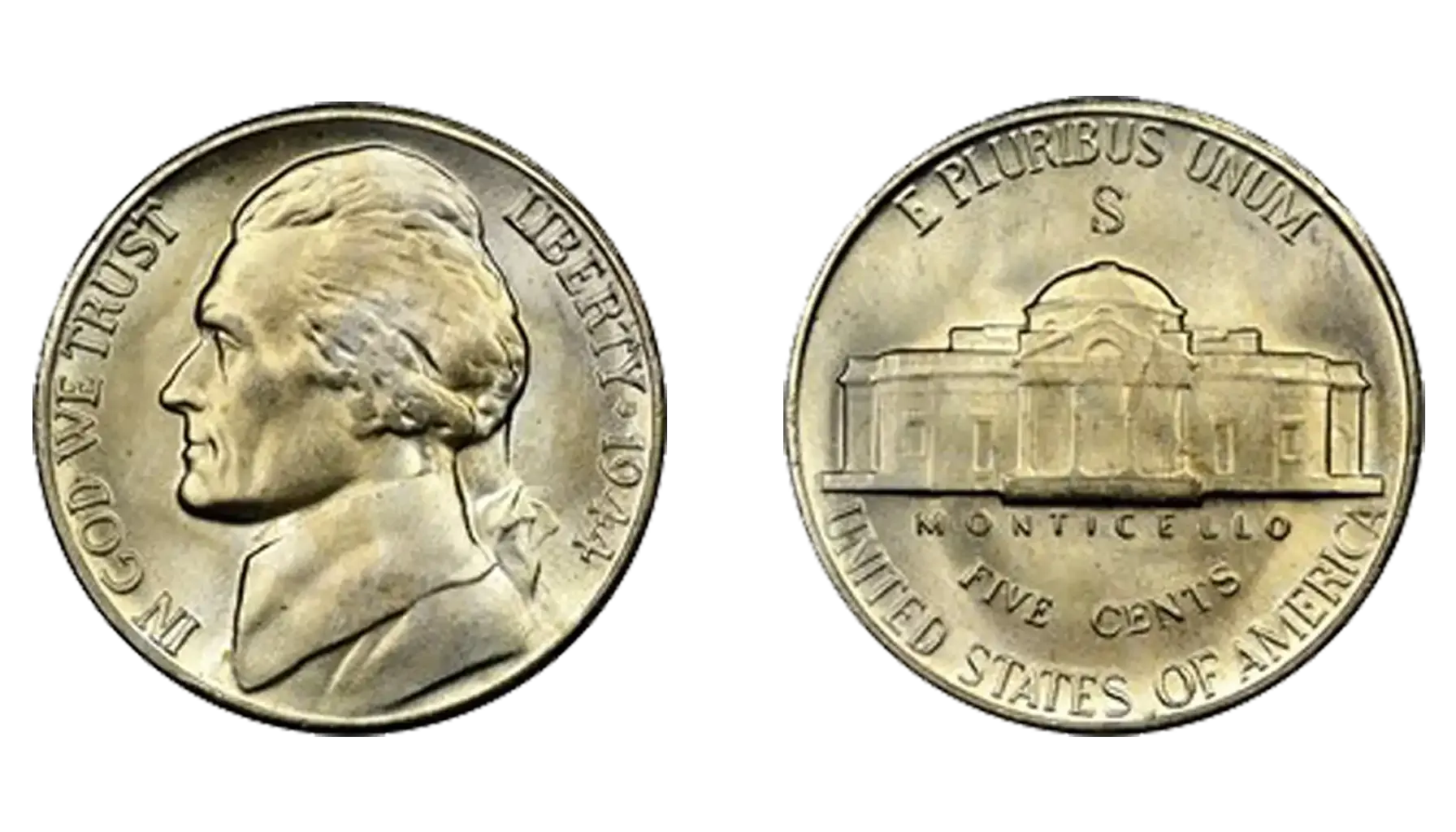
A Quick History of the 1960 Jefferson Nickel
The coin, introduced in 1938, features a left-facing portrait of Thomas Jefferson on the obverse and his home, Monticello, on the reverse. The 1960 edition came at the height of the Cold War, when Americans were tucking silver into drawers—and ignoring nickels.
The U.S. Mint produced:
PF coins in Philadelphia (for collectors)
Regular strikes in Philadelphia (no mint mark)
Regular strikes in Denver (with D mint mark = 1960 D Jefferson nickel)
In total, over 250 million pieces were minted in 1960—but only a fraction survive in pristine, valuable condition today.
Mint Marks: How Much Is a 1960 D Nickel Worth vs. 1960 P Nickel Value
Mint Location | Mint Mark | Mintage | Nickel 1960 Value (Average) | Value of 1960 Nickel (High Grade) |
Philadelphia | (none) | 55.4 million | $0.05–$1.00 | Up to $100 |
Denver | D | 192.6 million | $0.05–$3.00 | $50–$300+ (w/ Full Steps) |
No Mint Mark (Philadelphia Mint)
Location: No letter = struck in Philadelphia
Placement: No visible mint mark on the coin
Total mintage: ~55.4 million
This was standard for Philadelphia coins until 1980 (excluding wartime silver ones). Philadelphia ones are common in circulated condition.
In uncirculated condition with Full Steps, they can still reach $50–$100+ in 1960 nickel value no mint mark.
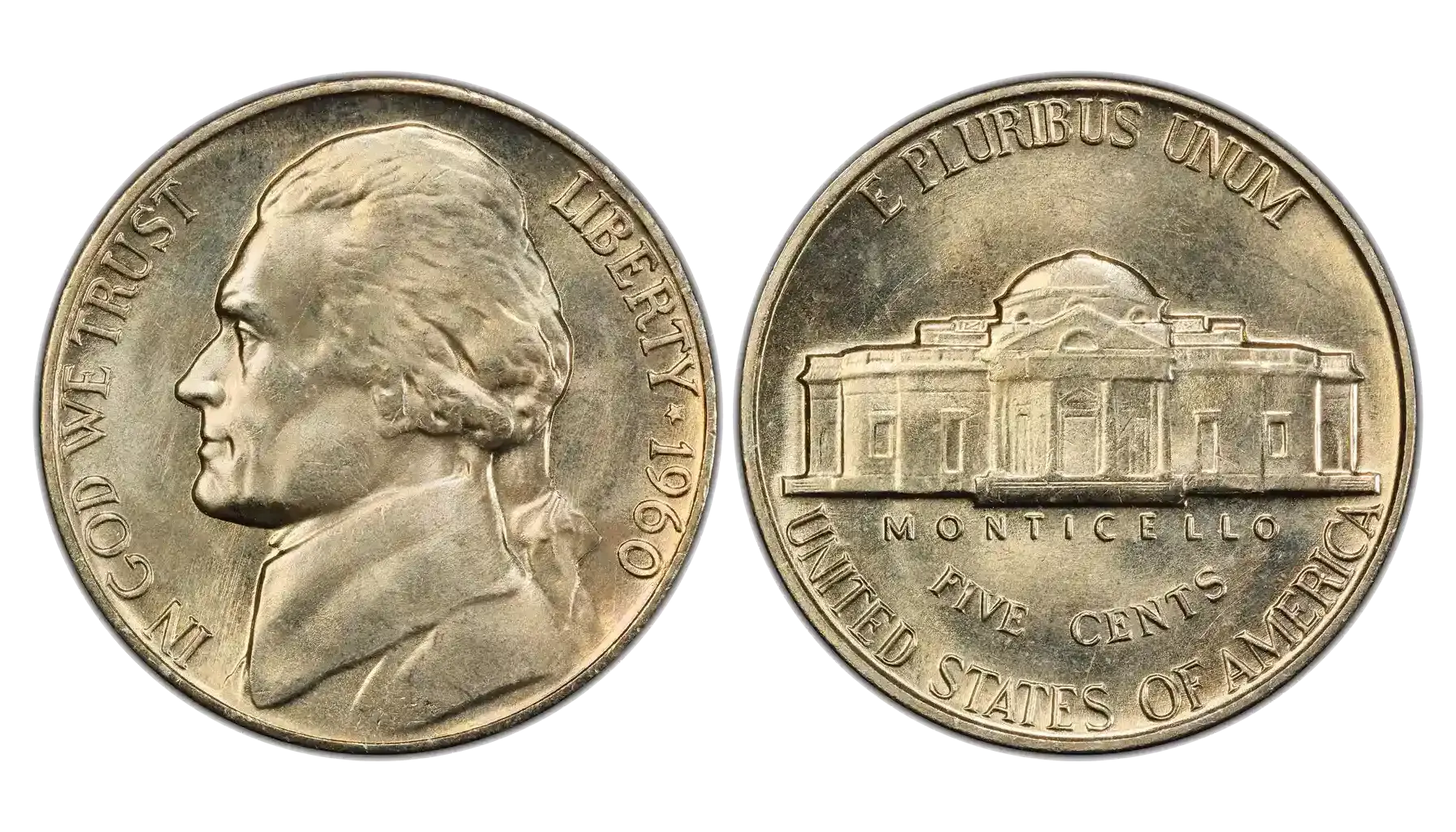
D Mint Mark (Denver Mint)
Location: "D" = struck in Denver
Placement: On the reverse of the coin, to the right of Monticello
Total mintage: ~192.6 million
Far more common than the Philadelphia strike.
Look for Repunched Mint Mark (RPM) errors, which increase collector value.
1960 D nickel value: Denver strikes in MS65 with Full Steps can sell for $100–$300+.
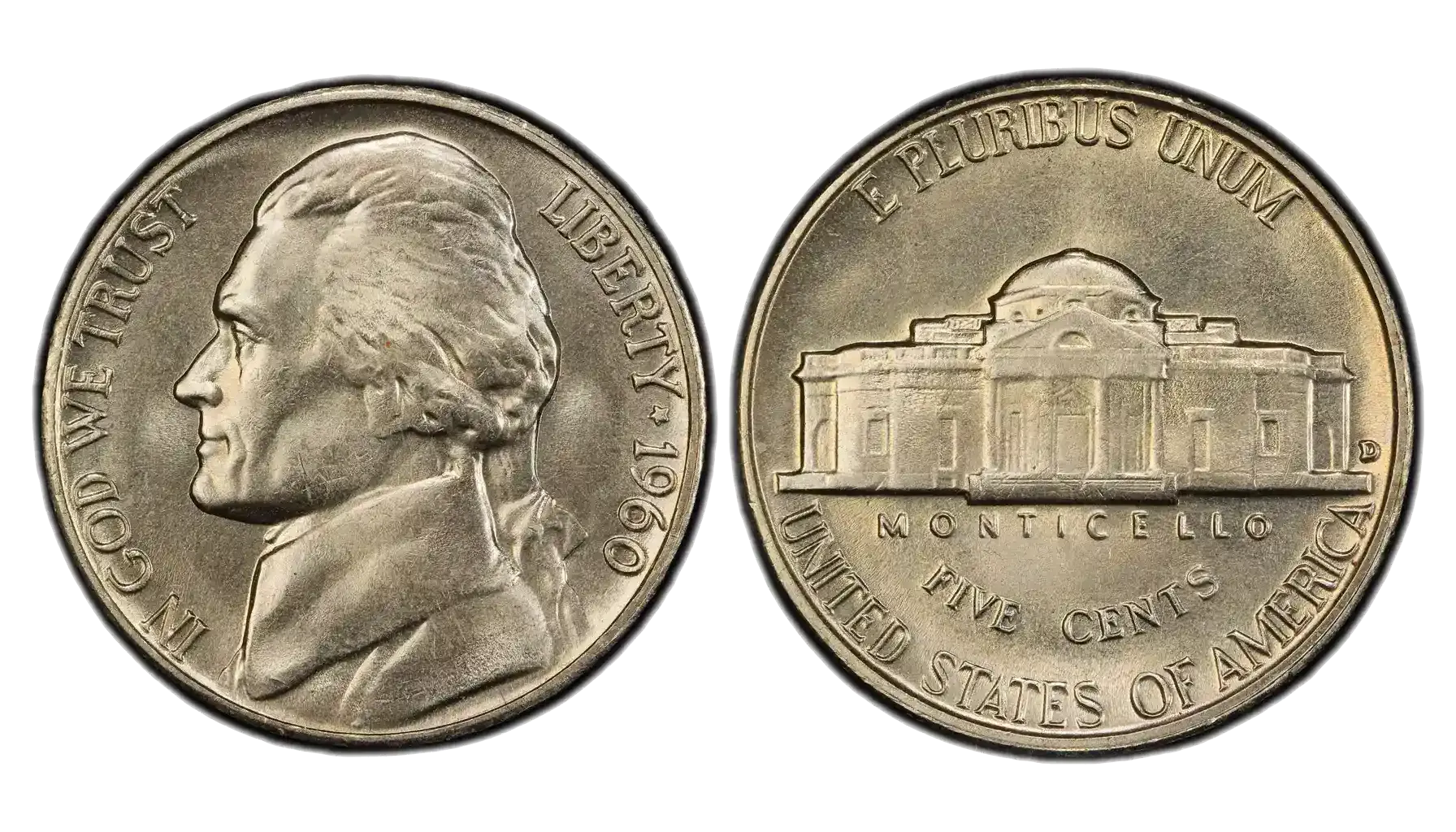
Where to Find the Mint Mark
Flip the coin to the reverse side (Monticello building).
Look to the right of Monticello, near the rim.
You’ll either see:
A small “D” for Denver
Nothing, which means Philadelphia
1960 Proof Nickel
It’s a specially struck version of the standard piece, created exclusively for collectors by the Philadelphia Mint. These coins were not intended for circulation and were included in official U.S. Proof Sets.
Mint: Philadelphia (no mint mark)
Finish: Mirror-like Proof with frosted devices and reflective fields
Mintage: Approximately 1,691,602
Availability: Only in 1960 U.S. Proof Sets (not released into circulation)
Composition: 75% copper, 25% nickel (no silver)

Special Varieties:
Cameo Proof:
Features frosted details and deep mirrored fields
Scarcer, especially in early 1960s proofs
Are 1960 nickels worth anything? Values can exceed $20–$50+ in PR66–PR69 CAM grades
Deep Cameo (DCAM):
Strong frost on design, stark contrast with the mirror field
Is a 1960 nickel worth anything? Very rare for 1960; collectors pay $100–$500+ for PR68 DCAM
What Is a 1960 Nickel Worth by Grade (Estimate)?
PR60–PR64: $1–$3 (common)
PR65–PR67: $4–$10
PR68–PR69: $15–$30+
Cameo / Deep Cameo PR68–69: $50–$500+
Grading: What Condition Means for 1960 Nickels Worth Money
Description | Estimated 1960 Nickel No Mint Mark Value | Estimated 1960-D Nickel Value | |
G-4 | Heavy wear, faint design | $0.05 | $0.05 |
VF-20 | Light wear, strong features | $0.15 | $0.20 |
EF-40 | Minor wear on high points | $0.25–$0.50 | $0.30–$0.60 |
AU-55 | Slight traces of wear | $0.75–$1.00 | $1.00–$1.50 |
MS-63 | Uncirculated, minor marks | $2–$5 | $3–$6 |
MS-65 Full Steps | Uncirculated + detailed steps | $50+ | $100–$300+ |
Disclaimer: The prices are average and may change due to market trends. Coins with Full Steps (at least 5 clear, uninterrupted lines on Monticello) are premium-grade and make 1960's nickels worth money.
1960 Nickel Error List with Pictures
Repunched Mint Mark (RPM)
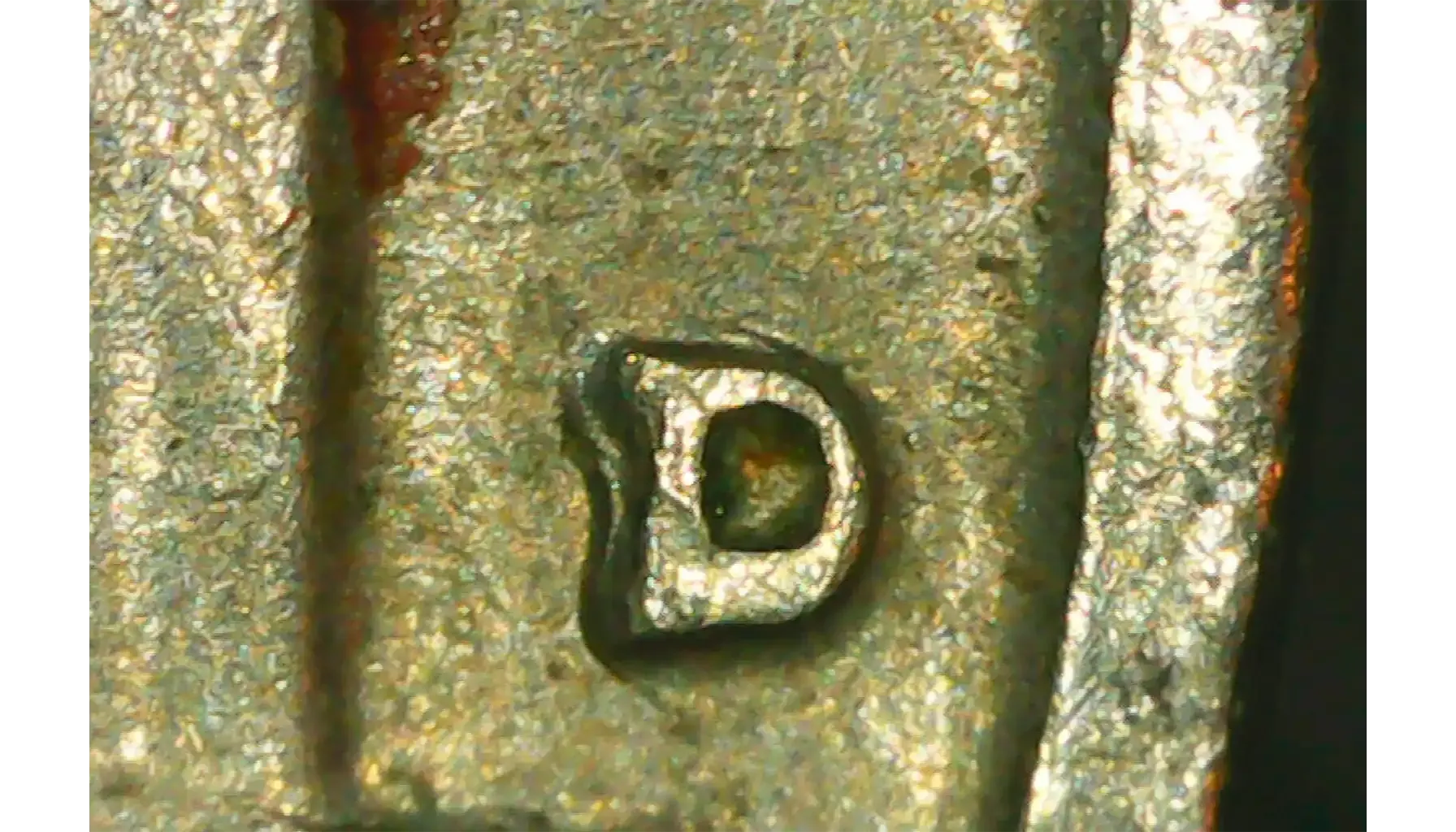
A common and collectible error on 1960-D nickels.
What to look for:
Doubling of the “D” mint mark
Slight misalignment between punches
Visible under 10x magnification
Value range:
$10 for minor RPMs
Up to $150+ for high-grade or dramatic re-punches
Doubled Die Obverse (DDO)
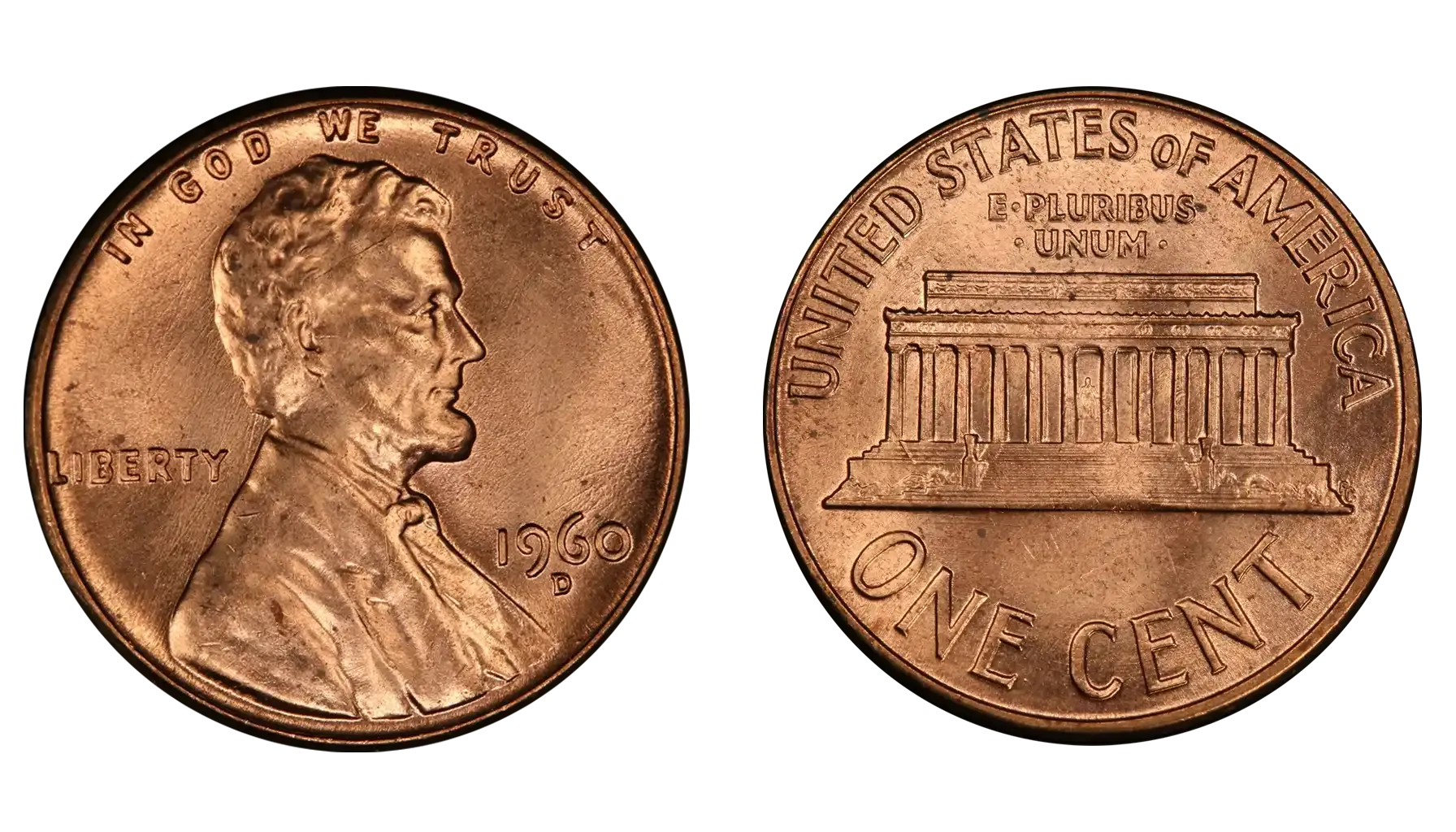
This error gives parts of the design a shadow-like duplication.
What to look for:
Doubling in LIBERTY, IN GOD WE TRUST, or the date 1960
Slight separation between letters or numbers
Jefferson’s profile may also appear doubled
Value range:
$30–$60 for moderate examples
$100+ for bold doubling in Mint State
Off-Center Strike
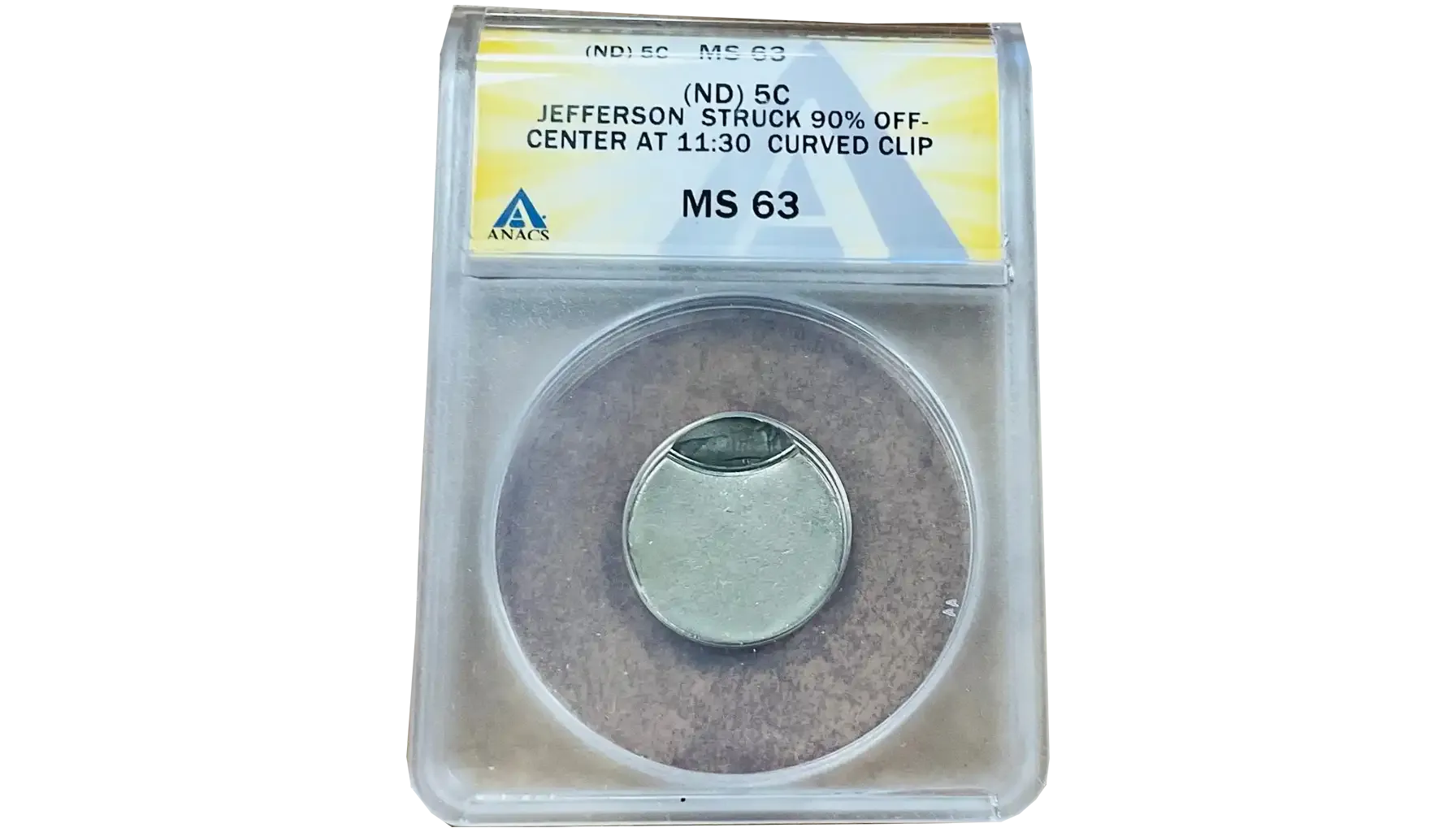
A dramatic misalignment during striking can make the coin's design partially missing.
What to look for:
Part of Jefferson’s face or Monticello is cut off
Edge appears wide and uneven
Date and mint mark must still be visible for higher value
Value range:
$10–$40 for 10–20% off-center
$100+ for 50% or more off-center with full date
Broadstrike (No Rim)
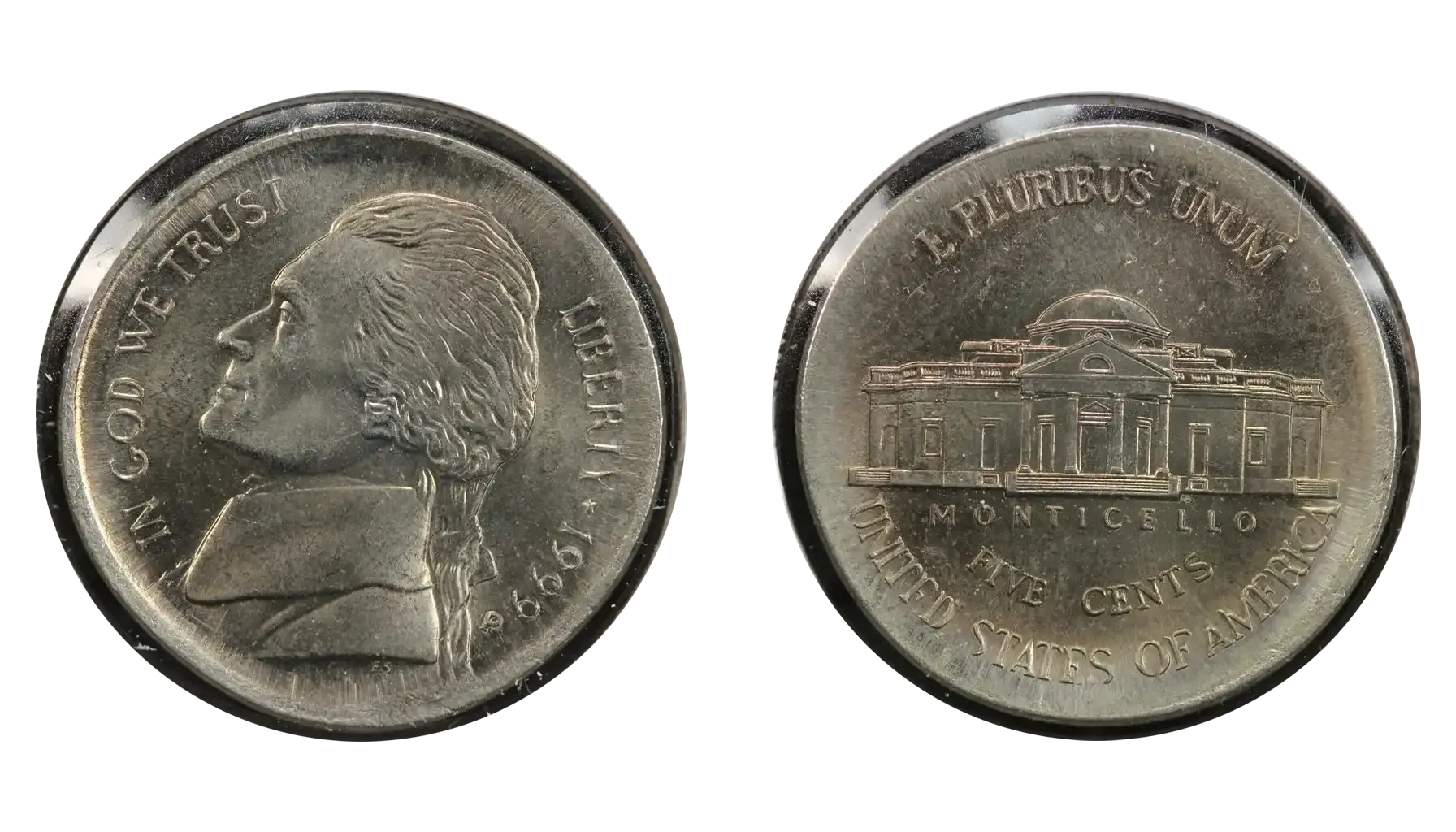
The coin was struck without the collar that normally shapes its rim.
What to look for:
Coin appears wider and thinner
Rim is completely missing or mushy
Design may be stretched or distorted
Value range:
$15–$50 based on clarity and grade
Clipped Planchet
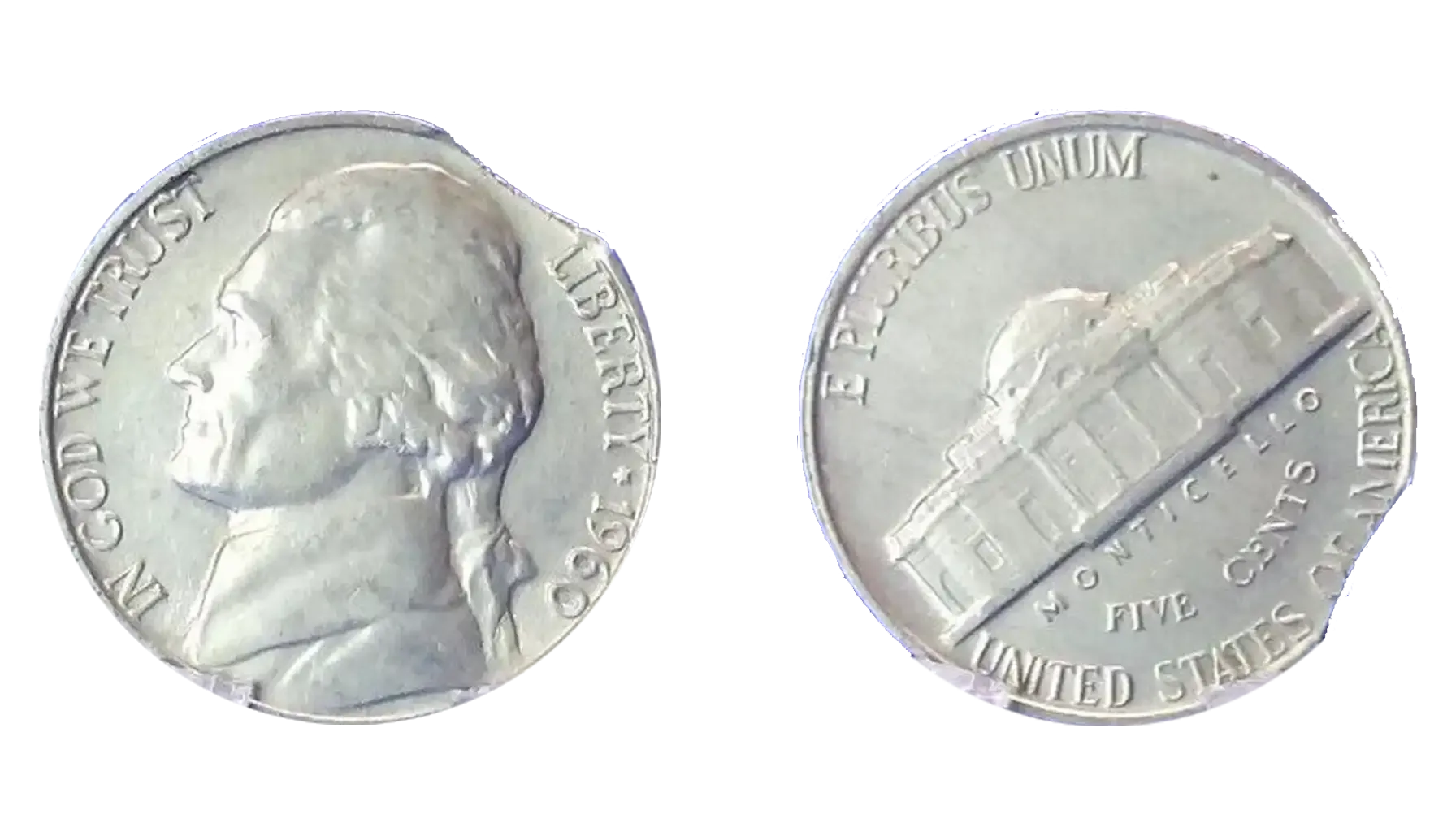
A minting blank was cut too close to the edge of the metal sheet.
What to look for:
Crescent-shaped missing portion on the edge
Smooth curve, not jagged or scratched
Metal flow lines may curve around the clip
Value range:
$10–$30 for small clips
$50–$75+ for large or multiple clips
Die Cracks & Cuds
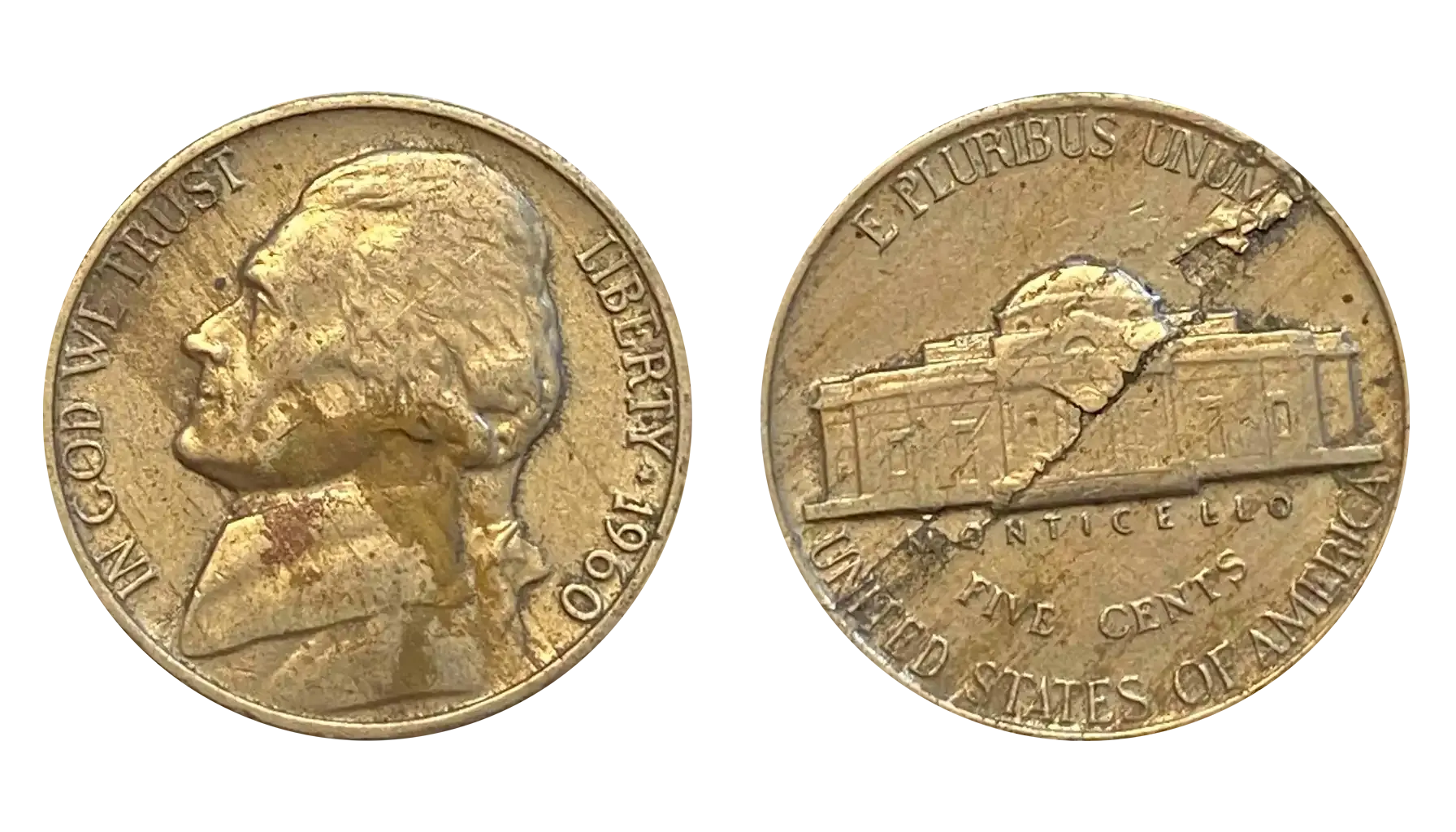
Cracks or breaks in the die transfer raised marks or blobs to the coin.
What to look for:
Thin, jagged raised lines (die cracks)
Large blobs near the rim (cuds)
Often visible without magnification
Value range:
$5–$25 for minor cracks
$50–$100+ for dramatic cuds
Struck Through Debris

Foreign objects interfered with the strike, altering the design.
What to look for:
Missing or smeared design areas
Unusual textures or indentations
Coin may appear “ghostly” or partially blank
Value range:
$10–$50+ depending on severity and uniqueness
Double Struck
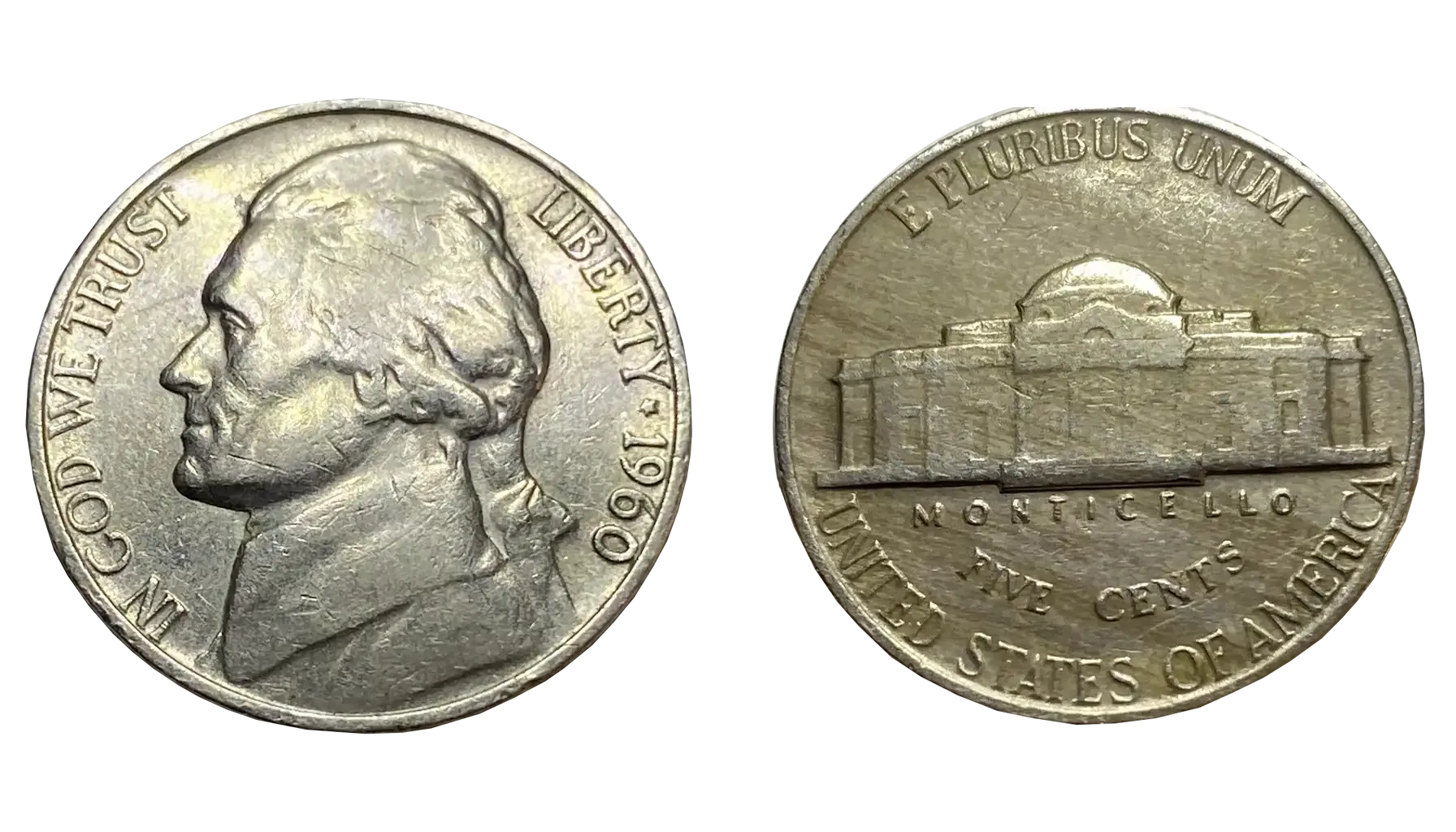
The coin was struck more than once, usually with a misalignment.
What to look for:
Overlapping portraits or Monticello images
Circular distortion in one area
Sharp or shadowed doubling of elements
Value range:
$50–$150 for minor double strikes
Up to $250+ for bold, visible examples in high grades
Error Detection
Always examine them under strong light and magnification.
Don’t dismiss worn coins—some errors persist even in circulated condition.
Use tools like Coin ID Scanner or send your rare 1960 nickel finds to NGC or PCGS for verification.
Real Auction Examples That Prove the Point
1960 Nickel D Mint Mark MS66 FS (Full Steps) sold for $456 at Heritage Auctions.
1960 MS65 DDO hammered at $180 on eBay.
1960 RPM MS64 brought in $125 from a private collector.
What’s Your Specimen Really Worth?
Beneath its worn surface may lie a collector's dream—especially if you spot that Full Steps strike, a 1960 D nickel error, or a doubled die.
Your next steps:
Inspect your coin carefully under light.
Use a scanning app to verify varieties.
Compare it to auction results for context.
If you suspect a rare 1960-D nickel error (or no mint mark), get it graded by PCGS or NGC.
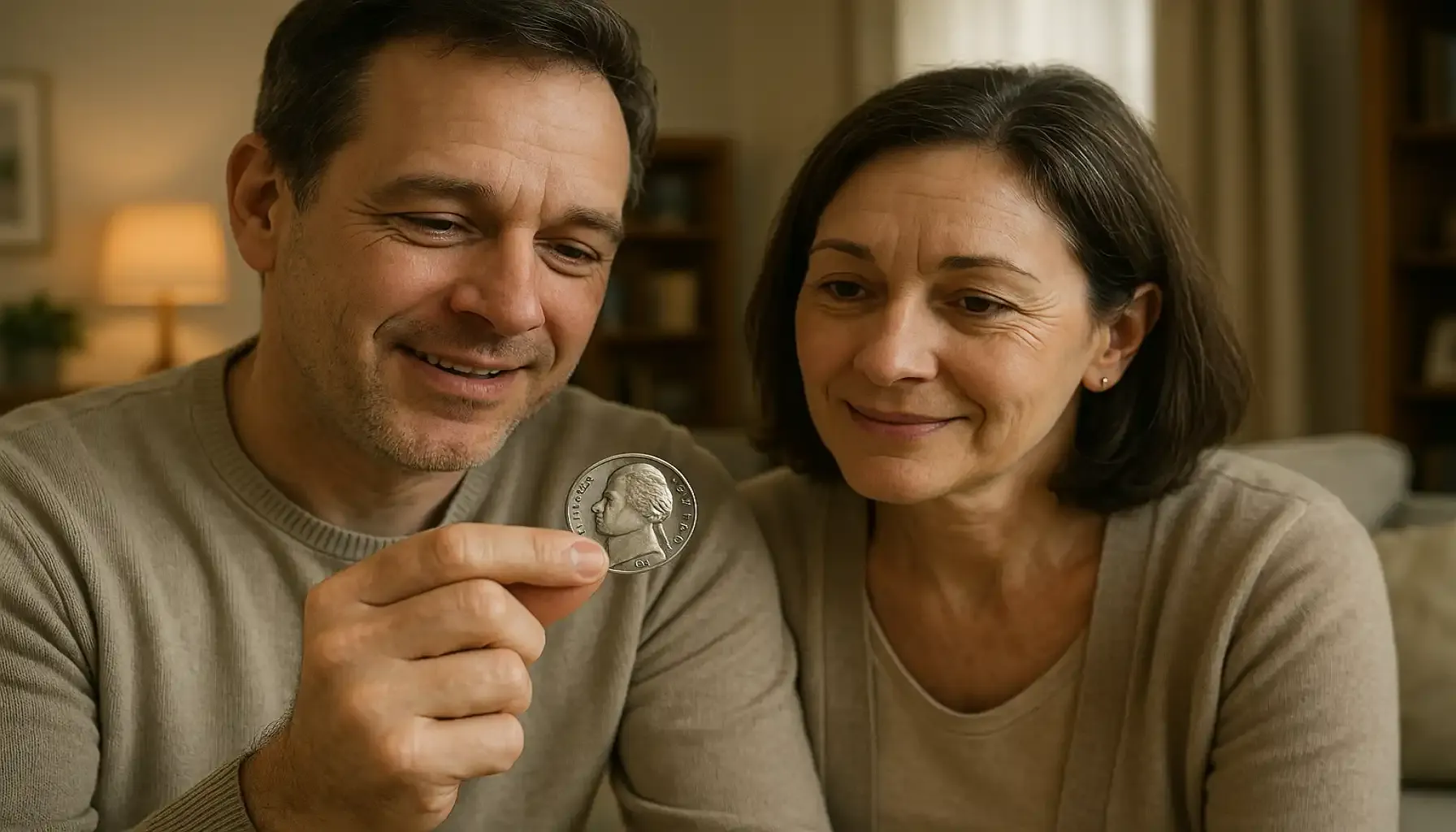
FAQs
Can a 1960 Jefferson Nickel Be a War Nickel?
No. War coins were only minted from 1942 to 1945 and contain 35% silver, making them distinct in both composition and appearance. A true war one features: A large mint mark (P, D, or S) above Monticello on the reverse A duller, more silver-colored surface due to the alloy The 1960 piece, however, contains no silver and follows the standard cupronickel formula. If you’re unsure, check the reverse placement of the mint mark and the coin’s color—war nickels often appear darker due to oxidation.
Are All Specimens With Full Steps Valuable?
Not necessarily. Only high-grade coins with complete Full Steps are significantly valuable. "Full Steps" refers to the clearly visible lines on Monticello's steps on the reverse of the coin. To qualify: A coin must show at least 5 full, unbroken horizontal lines There should be no visible nicks or interruptions But here’s the catch: Many coins graded MS65 still lack true Full Steps Only certified FS coins in MS65+ condition fetch $50–$300+ So yes—Full Steps boost value, but the coin’s overall grade and strike quality are equally critical.
Is This Coin a Good Investment?
It depends on the variety and condition—but in general, it’s better for hobbyists than investors. Circulated specimens are extremely common and worth face value. Only high-grade MS coins with rare traits (e.g. Full Steps, RPMs, DDOs) hold strong investment potential. Proof versions, especially those with Deep Cameo designations, are more stable long-term assets. If you’re collecting for value: Focus on PCGS/NGC-graded MS66+ coins with rare features Be wary of overpaying for raw coins that aren’t authenticated

